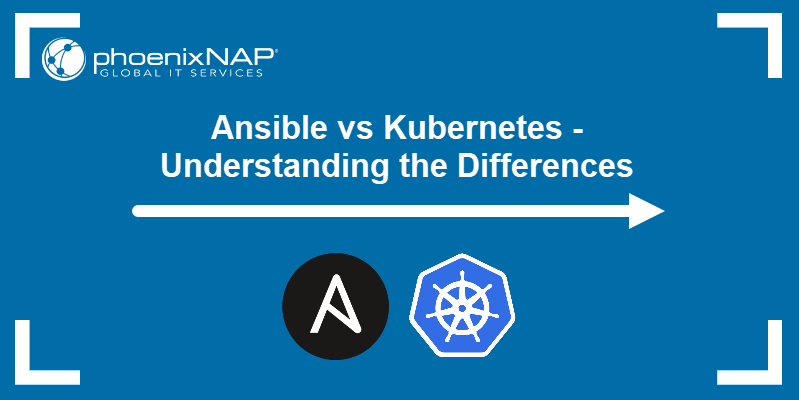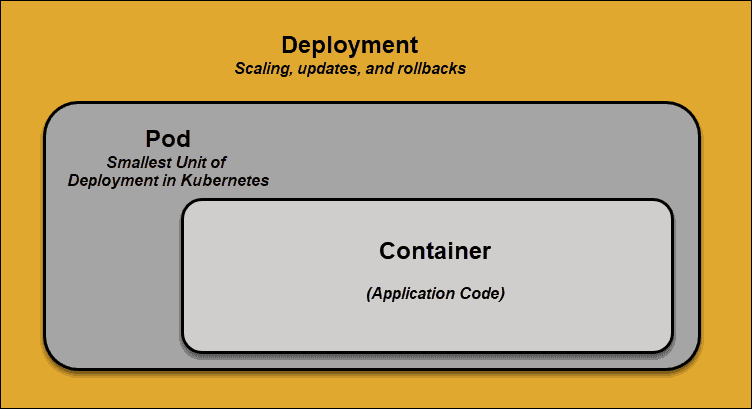Introduction
As web applications become larger and more complex, the need for automated software development, infrastructure provisioning, and maintenance grows.
From tools that help with repetitive tasks (such as deploying and updating apps on cloud native servers) to full-fledged container orchestration solutions, automation in software development is a diverse and fast-evolving field.
This article presents the advantages and disadvantages of two popular automation tools - Ansible and Kubernetes. Furthermore, it includes use cases for each platform and suggests how you can use them together.

Ansible vs Kubernetes: Definitions
Both Ansible and Kubernetes are automation tools, but they serve different purposes in the software development lifecycle.
Ansible
Ansible is an automation engine that automates application deployment, cloud provisioning, orchestration within a service. Additionally, it helps with configuration management. It is a declarative system that uses YAML-based Ansible Playbooks that utilize straightforward language to describe automation jobs.
Tools similar to Ansible are Jenkins, Puppet, Terraform Chef, Rudder, etc.
Note: Head to our blog for an in-depth comparison between Terraform and Puppet.
Kubernetes
Kubernetes is an orchestration platform for automating deployment, management, and scaling of containerized apps. Its primary function is cluster management. It also controls scheduling, execution, and management of Docker images on the server. It is compatible with many container tools and provides a unified API interface capable of managing complex systems spread across multiple servers and platforms.
To explore tools similar to Kubernetes, check out our article on Best Container Orchestration Tools.
How Do They Work
Ansible
Ansible works by pushing Ansible modules (standalone scripts contained in Ansible playbooks) to nodes. The modules are designed to describe the desired state of the entire system, including the underlying infrastructure. They are executed over SSH and removed once the system reaches the desired state.
Ansible does not require servers, databases, or daemons. It uses a single "control node" to manage and monitor remote servers. The modules can be located on any server in the system. A simple INI file is used to list the managed machines in groups. Below is an example of the contents of one such file:
[webservers]
www1.test.com
www2.test.com
[dbservers]
db0.test.com
db1.test.com
db2.test.comWith Ansible, it is possible to add and remove machines from load balancers and monitoring windows, dynamically build configuration files, and centralize configuration management and deployment.
Kubernetes
Kubernetes works by receiving user input through manifest files. These files contain the general description of the desired state of the cluster. Users interact with Kubernetes through kubectl, the default command line interface. In turn, kubectl passes on instructions to the Kubernetes API server.
The purpose of the API server is to automatically manage containers by following the declaration provided in the manifest file. It ensures that the current state of the cluster and the desired state are always the same.
Kubernetes clusters consist of the following components:
- Pods - Groups of containers on the same node that are configured to work together. Pods are the smallest unit of deployment in Kubernetes.

- Labels - Key/value pairs assigned to objects for identification.
- Services - Pod groups operating under the same name and performing the same function. Services can be used as load balancers, controlling the distribution of traffic.
- Replication controllers - Frameworks for ensuring that the correct number of pod replicas are scheduled and running at any given time.
For a detailed explanation of how Kubernetes works, read this complete guide to Kubernetes.
For more comparison articles featuring Kubernetes, refer to:
Ansible: Pros and Cons
Pros
- Simple - Ansible is easy to set up and learn as it features comprehensive and well-organized documentation. It is also simple to troubleshoot errors in Ansible because it runs tasks sequentially and stops upon encountering an error.
- Agentless - All communication regarding node management in Ansible is performed via SSH or the Paramiko module (an implementation of SSH2). In practice, this means that Ansible does not require any remote server agents, which improves the tool's performance and security.
- YAML-based - Ansible playbooks are essentially YAML files, which are easy to read and well-known to developers.
- Capable and efficient - The tool is able to handle complex workflows.
- Flexible - Many useful modules allow for easy customization of Ansible.
- Designed in Python - Python libraries are part of most Linux distributions. Therefore, developers often feel at home when working with it.
- Free - Ansible is an open-source solution offered free of charge.
Cons
- Underdeveloped GUI - Ansible was created as a command line tool. Later attempts to implement a GUI (such as AWX and later Ansible Tower) have not managed to transfer all the functionality of the CLI. The GUI can also fall out of sync with the CLI, resulting in inconsistent queries.
- Stateless - Unlike Terraform or Puppet, Ansible is a stateless system and does not keep track of dependencies. This may present a problem in scenarios where the environment changes.
- Poor Windows support - Ansible for Windows is a work in progress. Currently, you can run Ansible on Windows, but Linux machines are still necessary to control the Windows hosts.
- Lack of community support - Ansible is relatively new in the market and has a smaller community of users than its competitors.
Note: Learn how Ansible stacks up against SaltStack.
Kubernetes: Pros and Cons
Pros
- Highly scalable and efficient - The ability to adapt to circumstances is what makes Kubernetes an extremely resource-friendly tool. It allows horizontal scaling by adding or removing containers to support increased or decreased workloads.
- Enables container communication - The platform provides a framework for containers to communicate and ensures they are always properly synchronized.
- Eliminates infrastructure lock-ins - With Kubernetes, organizations do not have to worry about the consequences of using multiple production and development environments. This is particularly useful in hybrid and multi-cloud scenarios.
- Declarative configuration - It allows users to declare a desired state of the system and then makes sure that state is maintained. Compared to imperative configuration, this approach is much less error-prone.
- Immutable - With the option to roll back changes, building and deploying new container images is easy and safe.
- Self-healing - Kubernetes automates the process of monitoring replicas and introduces new ones in case of failure.
- Free - It is an open-source project, available for free.
Cons
- Steep learning curve - Kubernetes is a complex system that uses many new technologies.
- Complexity - While applications with numerous, distributed users certainly benefit from Kubernetes, using the tool for simpler deployments can reduce productivity.
- Transition to Kubernetes can be difficult - Introducing it to your organization requires trained personnel and workflow adjustment.
Note: Learn about other available tools that are alternative to Ansible.
How to Choose
Given the difference in their functions, you do not need to choose between the two tools. Relying on one automation tool can be counter-productive in a software development environment. A broader automation strategy must be established before automation is introduced to an organization.
Kubernetes is not designed to manage the entire lifecycle of an application. Ansible is a good choice for managing servers and applications inside of Kubernetes, as well as external integrations.
Ansible is fully integrated with Bare Metal Cloud, a cloud-native platform built for DevOps teams. BMC also enables users to automate Bare Metal Cloud server provisioning from within Kubernetes clusters with phoenixNAP's Kubernetes controller.
Used together, Kubernetes and Ansible complement each other in a software development lifecycle as a highly cost-effective solution. While Kubernetes takes care of container health and management, Ansible deploys changes to hosts, configures systems, provisions infrastructure and organizes rolling updates and continuous deployments.
Lastly, Ansible is a great solution for automation of updates and other maintenance procedures of Kubernetes itself due to its easy-to-use nature and simple setup.
Conclusion
This article provided a comprehensive introduction to two popular automation tools - Ansible and Kubernetes. While you cannot directly compare the two since they serve different purposes, Ansible and Kubernetes are useful in application deployment and can complement each other.
If you want to learn more about the difference between Kubernetes and other tools, make sure to read our article Docker vs. Kubernetes or check out our article on Ansible vs Jenkins to see how these two DevOps tools compare.